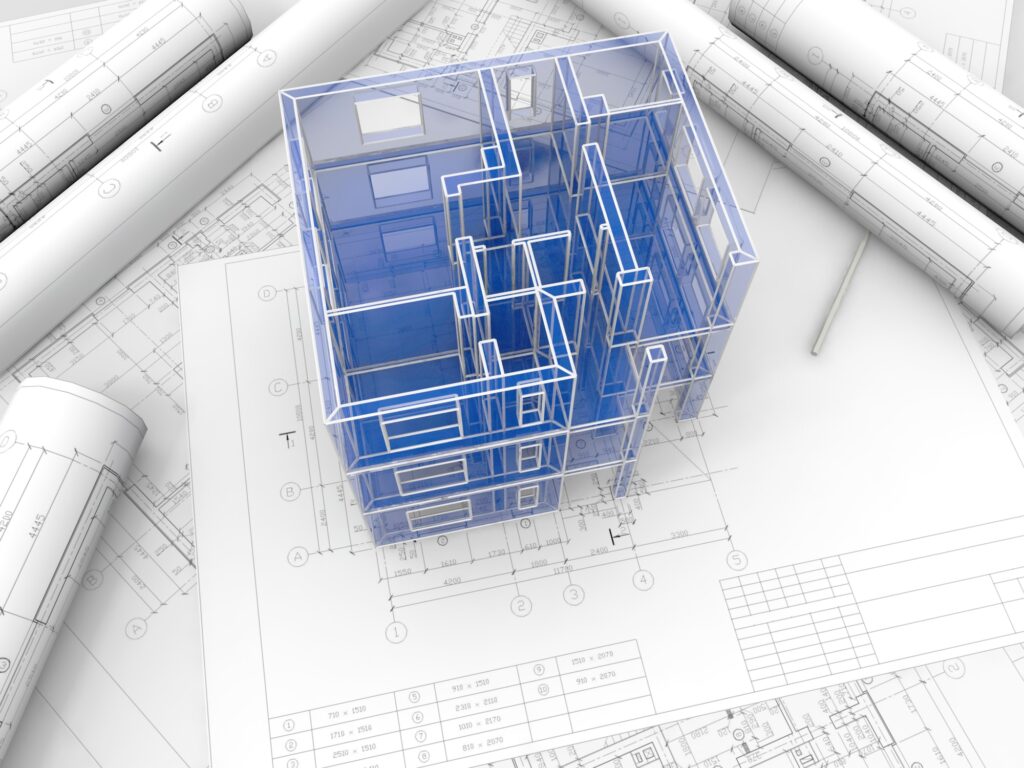The origins of BIM almost always associate BIM and its roles exclusively with the design team. However, upon close inspection of its history and evolution, the stories over the past fifty years would indicate that it is in the field of project management that BIM has its most long-term application (National Building Specification, 2015).
Since the 80s, designers have been using early computer-assisted designing and building information modeling (BIM). But by the conceptualisation and evolution of definitions for BIM, its ultimate end goal and greatest benefit is towards collaborative project delivery.
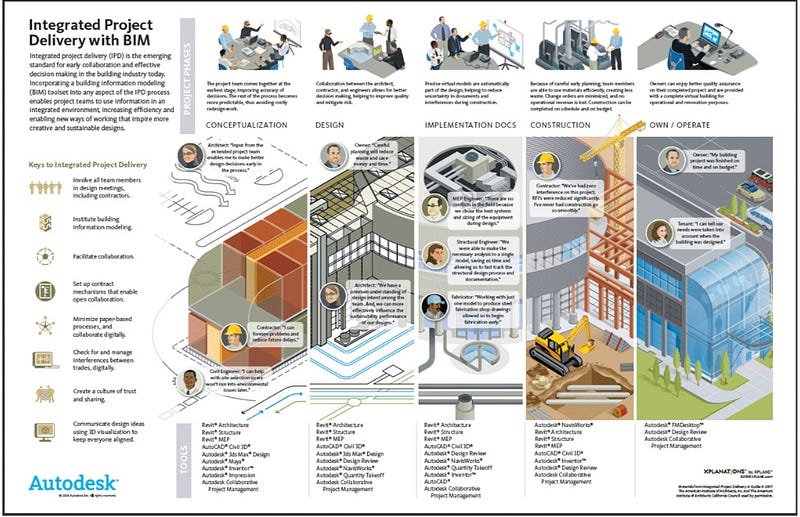
BIM in numbers
In the course of the last few years, BIM has attracted a lot of attention but there is still a long way to go before we can claim that the construction industry is getting the most out of its use.
Darren Smith, digital buildings solutions adviser at the Electrical Contractors’ Association, while talking to BIM+, revealed some very interesting numbers and statistics about the industry’s connection to Building Information Modeling:
- 69% of the ECA members, who participated in the quarterly Building Engineering Business Survey (2018), admitted that they had never been part of a BIM project.
- From the ones who had worked with BIM, 24% of them had done it for a maximum, offor three months.
As far as the number of firms that have embraced BIM projects is concerned, Mr. Smith highlights that it’s considerably small. More specifically:
- Approximately 4% of the interviewed organisations had worked with BIM on 25-49% of their projects.
- At the same time, maximum 2% had introduced BIM to 50-74% of their projects.
- Lastly, just 1% of the firms who participated in the survey had embraced BIM in 75% of their projects.
Interestingly enough, these numbers of engagement are actually not that bad as Electrical Contractors appear to be ahead of the curve compared to other sectors of the construction industry, according to Darren Smith.
This signifies that construction still hashas still plenty of room for improvement and promises better gains if stakeholders decide to adopt a more proactive approach toward BIM. Like that, they will be able to experience first hand some of the biggest benefits of Building Information Modeling:
- Reduction in construction and project lifecycle cost by 33%.
- Decrease of a project’s lifecycle, from start to completion, by 50%.
- Significant savings in terms of materials used in the course of the construction process.
- Improvements in terms of health and safety.
- Reduction of risk and much more predictability in the course of the building process.
- Less fragmentation and better information flow across the supply chain.
It easily becomes clear that the contribution of Building Information Modeling to construction could be multi-level and help the industry fight against low productivity, high rework rates and negative margins.
But what does introducing BIM in the project cycle look like? In the next chapter, we dive into the topic and unravel the impact of BIM on collaboration and communication between the site and the office.
BIM in the project cycle
The US National Building Information Model Standard Project Committee defined BIM as:
“A digital representation of physical and functional characteristics of a facility. A BIM is a shared knowledge resource for information about a facility forming a reliable basis for decisions during its life-cycle; defined as existing from earliest conception to demolition.
A basic premise of BIM is collaboration by different stakeholders at different phases of the life cycle of a facility to insert, extract, update or modify information in the BIM to support and reflect the roles of that stakeholder.”

The committee also mentioned that as a practical matter, BIM represents many things depending on the perspective:
- To a project, BIM’s role is information management. BIM is the data contributed and shared by project participants — basically, BIM is the correct information communicated to the right person at the right time.
- To participants of a project, BIM is an interoperable process for project delivery. BIM essentially defines how respective teams work and how many teams work together to conceptualise, design, build, and operate a project or facility.
- To the design team, BIM represents integrated design. BIM provides technology solutions, promotes creativity, provide feedback, and empowers the team.
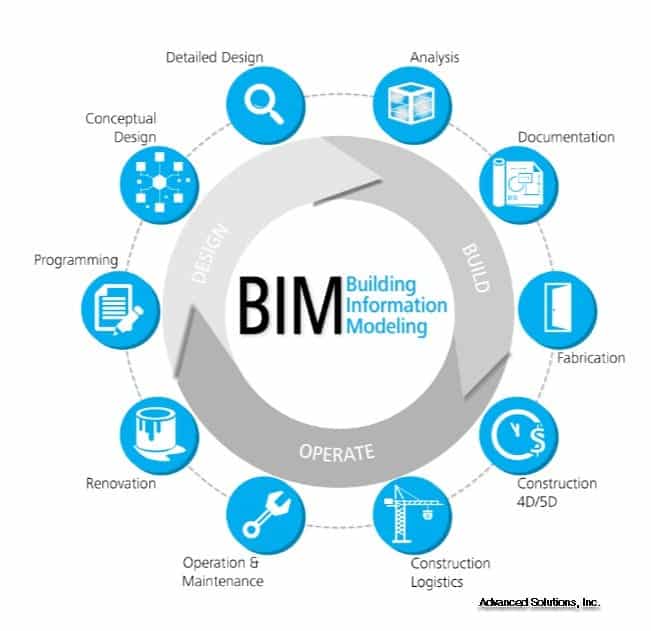
Modern BIM modelling integrates all relevant information and specifications pertaining to the project and provides the project teams with accurate data on:
- The cost of the entire lifecycle of a project.
- Anticipated issues with “buildability”, including location of services.
- Programming constraints.
As different design team members tackle specific tasks in various stages of a project’s life cycle, the need for continuous overall management of the project in all its stages becomes an imperative. The past two years, at least, the construction industry has seen the move to a more integrated database working method from a document-based environment.
Conventionally, the geometric model and scheduling software were two separate databases. With the advent of 4D BIM, the two are now incorporated. To fully utilise BIM and to realise its full benefits, the project manager needs to understand and use BIM information thoroughly. Now, as project managers work with automated data and having the ability to see relationships within a project, BIM information can be used to manage processes and make better decisions founded on reliable information that can be executed at an earlier stage.
BIM and collaboration
As BIM is finding its way more as an information and work collaboration tool, it has increasing importance in allowing ease of communication and providing a platform from which everyone can work (versus the traditional maintaining of separate information, ideas, and drawings). As pointed out by Macdonald, better collaboration is crucial in improving efficiency:
“Collaborative working practices, where all design team members are engaged at an earlier stage in the design process, aided by BIM tools, are estimated to save at least 10% of the cost associated with traditional design-build projects (Egan, 1998 and Allen Consulting Group,2010).”
BIM is changing project management practice drastically. It is fundamentally concerned with:
- Coordination
- Time and cost estimation
- Programming
- Procurement
- Design input at differing stages, for example subcontract trades on site
With these features, BIM fits perfectly with the integrated project delivery (IPD) process or method. IPD, as defined by the American Institute of Architects, is:
“A project delivery approach that integrates people, systems, business structures and practices into a process that collaboratively harnesses the talents and insights of all participants to optimize project results, increase value to the owner, reduce waste, and maximize efficiency through all phases of design, fabrication, and construction.”
How does integrated project delivery work?
IPD is an emerging project delivery model intended to create a cooperative and collaborative environment through the use of a multi-party system between the owner, designers, contractor, subcontractors, and other key trade entities. IPD was formulated as a solution to reduce the risk of costs overrun during project construction and to predict the whole lifecycle cost of an asset (infrastructure project). The US construction industry has grown to favor the use of IPD in projects.
The IPD project team is made up of a multi-party agreement between:
- Owner
- Contractor
- Designers
- Facilities manager
- Major trade contractors (mechanical, electrical, fire, and plumbing)
All major stakeholders have a direct contractual relationship with each other and they will have enforceable obligations between them concerning (Stirton, 2015):
- Ownership and licensing of Intellectual Property
- Confidentiality
- Liability, both as between themselves and to third parties
- Insurance
- Methods of dispute resolution
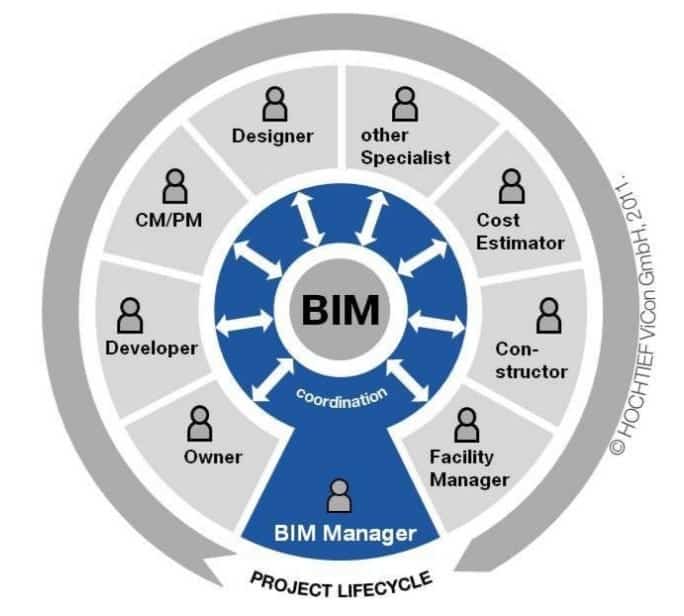
IPD project teams are formed at the conceptual phase of a project and each of the stakeholders work together to make a “constructed asset” in BIM before going ahead with the construction. IPD prescribes the use of BIM or similar collaborative environment platforms that allows the IPD project teams to work in conjunction with each other to easily address issues of “buildability” or unforeseen risks that would pop up during the construction phase.
Using IPD requires a change in project delivery approach — owners are obliged to devote more time and incur expenses at an earlier time (when compared with the traditional design-and-construct delivery model).
However, this early investment means that design issues have already been resolved before the start of construction, design alternatives and corresponding costs have been explored earlier with the construction teams, and as a result, a far more robust construction schedule and costs are established (Stirton, 2015).
Integrated project delivery and BIM
The American Institute of Architects Guide noted the interrelationship of IPD and BIM and why they go perfectly in construction projects (Ashcraft, 2008):
It is understood that integrated project delivery and building information modelling (BIM) are different concepts — the first is a process and the second a tool. Certainly integrated projects are done without BIM and BIM is used in non-integrated processes. However, the full potential benefits of IPD and BIM are achieved only when they are used together.
BIM and IPD complement each other by improving the management of the project through increased data exchange and cooperation between stakeholders, which results in (Stirton, 2015):
- Less risk of defects and rectification.
- Less waste of materials.
- Fewer issues during construction.
IPD is the process that catalyses the parties to easily share ideas, information, and intellectual property (Stirton, 2015). Pairing this with BIM creates effective and efficient delivery throughout the project’s lifecycle. This system takes away the “us versus them” mentality because all stakeholders must share protected intellectual property to achieve project outcomes.
The IPD-BIM methodology allows for flexibility in unforeseen changes in circumstances. An example of this would be the renovation of the Edith Green Wendell Wyat Federal Building in Portland, Oregon. A huge design issue came up during construction and the west facade had to be redesigned in 7 weeks. The project team overcame the delay because all stakeholders in the project were equally invested in the project outcomes as opposed to protecting each stakeholders’ self-interests.
BIM’s roles in an IPD cycle
There are eight phases in an integrated project delivery wherein BIM plays critical roles:
- Conceptualisation (programming)
- Criteria design (schematic design)
- Detailed design (design development)
- Implementation documents phase (construction documents)
- Agency review
- Buy-out
- Construction (contract administration)
- Close-out
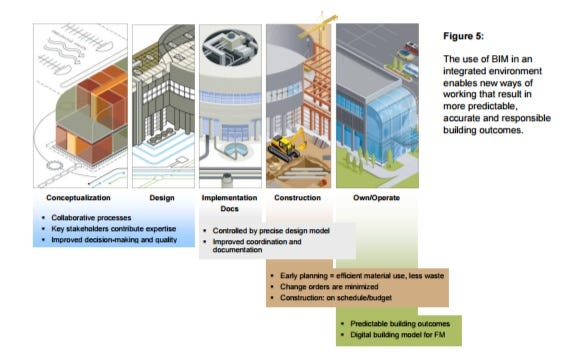
In these eight phases, BIM’s roles can be generalised into seven areas (Autodesk):
- Decision Making: By reducing poor design decisions by using BIM models and BIM tools during design and construction, decision making is greatly improved.
- Contract Documentation: By reducing the level of unknowns in contract documents and leveraging BIM to reestablish accuracy and precision and improve construction cognition and assembly understanding of all project participants, contract documentation becomes better.
- Preconstruction Estimation: Reducing the level of guesswork and inefficiency by leveraging schematic design take-offs generated in the BIM process greatly improves pre-construction estimation. This also includes leveraging the use of multiple pricing models by the contractor and reuse as built digital models in new markets.
- Procurement and Scheduling: Reforming procurement and project scheduling through the use of time modelling and cost modelling (BIM 4D/5D) eliminates job-site downtime and improves subtrade coordination, overlap and phasing.
- Coordination: Reducing the number of field coordination errors by integrating models of the major design early in the process and using clash detection software to facilitate interdisciplinary design coordination solves coordination issues virtually rather than in the field.
- Cost Efficiency: Reducing cost impacts of coordination errors, incorrect fabrication, and improper installation by adopting a pre-fit workflow from the designer to the subcontractor and enforcing greater installation precision greatly improves cost efficiency. Using BIM in the IPD model also reduces the use of overtime labor and reduces spending in general conditions, insurance, and carrying costs by optimising project schedules that result in faster construction.
- Close-out Documents: Migrating to a BIM-centric approach for all project documents transitions the traditional close-out documents into digital ones allows the project owner/operator to continue using the documents from the design and construction phase all through out to facilities management and to overall building lifecycle management.
Data is the core value of BIM
BIM can play a decisive role in enriching the stream of data from the project during the construction phase. Nevertheless, a BIM model can only be as good as the data added to it. In that sense, it is no exaggeration to claim that data is the core value of BIM and that digital adoption is a vital factor for the success of a project.
Data is a vital element for the standardisation of the construction process and the production of results that can be consistently replicated in the future. For instance, being able to link quality and compliance processes to the BIM model can help a lot in defining onsite quality processes across teams and improving the projects’ as-built documentation.
Outlining a certain set of internal classifications is also tremendously important. Many companies are continuously struggling with the lack of a systematic protocol for their on-site follow up. This can have a severe effect on quality check and health and safety.
By mapping object classes to specific planned tasks, checklists, forms and teams stakeholders can ensure that processes are standardised and automated to ease the workload on site. And with every task completed and checked before, field data flows back to the model.
It is evident that the big challenge for the construction industry is to put BIM in the hands of the workers on the field. To achieve this, every organisation needs simple-to-use digital tools which will allow onsite personnel to submit their updates from the ground and keep the BIM model well-informed.
After all, workers on the field and BIM managers have completely different needs in terms of the type of information they need. An up-to-date 2D representation can work just fine for workers as it allows them to focus only on the data that they want. This simplicity can lock confusion out of the progress reporting process and motivate people to digitalise their daily working routine.
Without doubt, boosting digital adoption is the first step towards a uniform data environment where all project agents remain on the same page and exchange crucial information in real time.
In that manner, project teams can effortlessly remain aligned and organise their systems and processes in a data-driven environment in order to communicate better, capture more data and reestablish trust between the numerous project teams.
Synopsis
BIM is a valuable technical tool that is very much capable of delivering significant benefits in terms of cost savings, time savings, and overall productivity. To realise the full potential of BIM, it needs to be used collaboratively by all major stakeholders through a relationship-based contractual arrangement such as the IPD (Stirton, 2015).
This piece is part of a series covering building information modeling (BIM). Supplement this with articles discussing what BIM is and its benefits to the construction industry, its history, the challenges and potentials of this emerging construction technology, what are its future implications, and the common myths surrounding its use. Get ahead further with increased construction productivity by downloading the free ebook, The Circle of Productivity.

